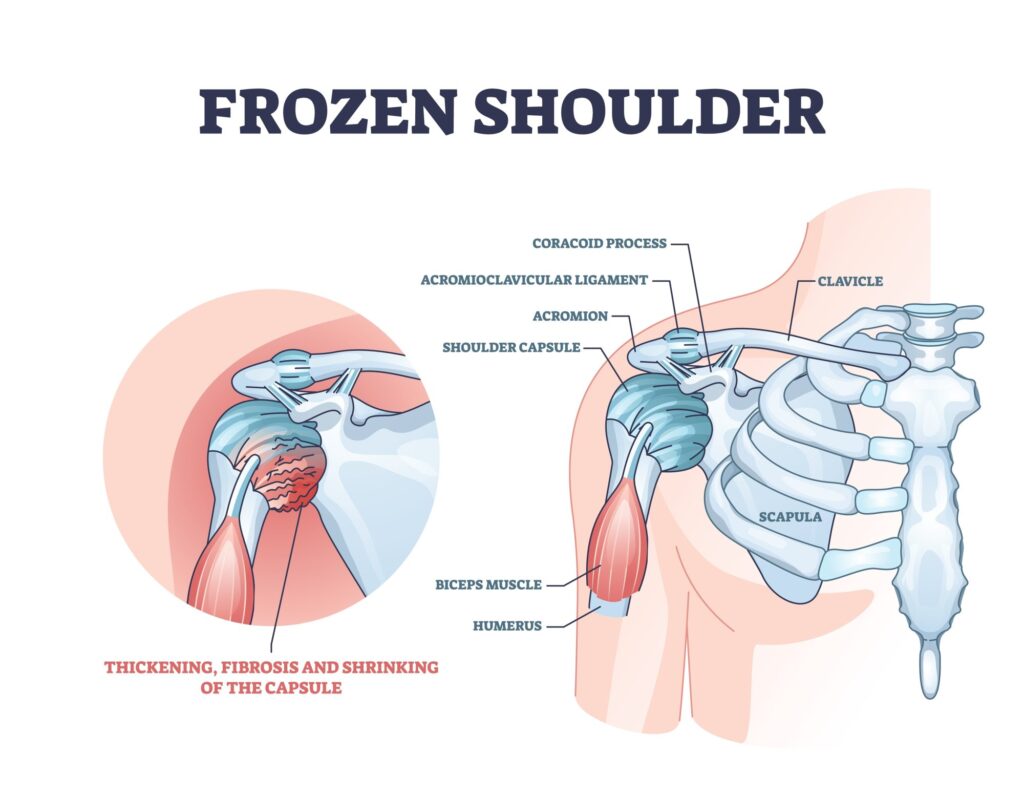What is Frozen Shoulder?
A frozen shoulder is a condition that affects the shoulder joint. Pain and stiffness usually develop gradually, worsen, and eventually disappear. This may take one to three years.
The shoulder is made up of his three bones that form a ball-and-socket joint. The upper arm (humerus), scapula (shoulder blade), and clavicle (collarbone). There is also tissue around the shoulder joint that holds everything together. This is called a shoulder bag.
With frozen shoulders, the capsule becomes thicker and narrower, making movement difficult. Bands of scar tissue form, leaving less fluid called synovial fluid to keep the joints lubricated. These things further restrict movement.

Symptoms
The main symptoms of frozen shoulder are pain and stiffness that make movement difficult or impossible. If you have frozen shoulder, you will feel a dull pain in one shoulder. You may also feel pain in the shoulder muscles that wrap your arm. The same sensation may also be felt in the upper arm. The pain increases at night and you may not be able to sleep.
Frozen shoulders typically go through three stages. Each has its own symptoms and timeline.
- Freezing Stage : Pain (sometimes severe) in the shoulder with every movement. It slowly gets worse over time and can be more painful at night. This may take him 6-9 months. The range of motion of the shoulder is limited.
- Frozen Stage : The pain may be getting better, but the stiffness is getting worse. Shoulder movement becomes more difficult, making it more difficult to cope with daily activities. This phase lasts from 4 to 12 months.
- Thawing Stage : Range of motion begins to return to normal. This may take 6 months to 2 years.
Physical therapy for Frozen Shoulder
Physical therapy can help get the shoulder moving again.
Your physical therapist will determine how many sessions you need. The exact number will depend on how your shoulder responds to treatment.
The physiotherapist will first check the movement of the shoulder. Physiotherapist treatments include:
1- stretch
2- strength training
3- good posture advice
3- pain relief advice
If you still have pain after the session is over, talk to your doctor or physical therapist again. They may prescribe more physical therapy or try a different treatment.